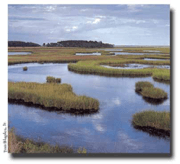Eats plants
Herbivore
Highly productive lake
Eutrophic
These plants are completely under water.
submerged
Water strider floating on water
neuston
Cold water is more ____ than warm water
dense
Phytoplankton is a ___
plant or herbivore
Northern lakes have more than one __ a year
lake overturn
Cattail is an example of this type of plant
emergent
riffle
When lakes age due to sediment and fallen leaves
succession
Fish, raccoons and ducks eat meat and plants and would be a ___ consumer
secondary
body of water where depth of light penetration can vary from several inches to many feet in open water.
lake
lentic system characterized by large based trees such as cypress.
Swamp
resacas
area of lake is characterized by warm water, freely circulating surface water with variable temperatures
Epilimnion
Two types of decomposers
bacteria and fungi
zone of lake is characterized by a shallow vegetative area with good light penetration.
Littoral zone
About means
not living
Two types of water that hold more dissolved oxygen
cold and fast moving water
zone refers to the inner bank of a stream where velocity is at a minimum
Depositional zone
What do you have to have more of in a food web and where would they be located
Plants (autotrophs) base of the food web
The boundary between the cooler depths of a lake and the warmer surface waters is known as the (also called the transition zone)
Thermocline
What is this. 
marsh
area of a lake where sunlight penetrates is called the:
Photic zone
This area of lake is the interface between warm and cold water. There is a rapid decrease in temperature approximately 1 0 C per meter of depth
thermocline